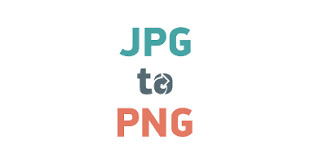Introduction:
In the dynamic digital sphere, images serve as powerful communication tools, conveying messages with clarity and impact. Understanding the nuances of image formats is essential for optimizing visual content. This article delves into the process of converting JPG to PNG format,
exploring the characteristics, distinctions, and practical applications of each, while underscoring the convenience of utilizing online converters for seamless conversions.
Decoding JPG:
JPG, an acronym for Joint Photographic Experts Group, reigns as the go-to image format for photographs and digital graphics. Leveraging lossy compression, JPG files prioritize smaller file sizes by discarding select image data. While this compression may result in minor quality loss, it facilitates efficient web usage and enables swift sharing across digital platforms.
Unlocking the Potential of PNG:
PNG, Portable Network Graphics, emerges as a versatile successor to GIF, offering lossless compression and transparency support. Unlike JPG, PNG files retain all image details without compromise, making them ideal for graphics requiring precise rendering and transparent backgrounds. This format excels in preserving image integrity, making it suitable for logos, icons, and graphics with sharp edges.
Distinguishing Features of JPG and PNG
- Compression Techniques: JPG employs lossy compression to reduce file size, sacrificing minimal image data, while PNG utilizes lossless compression, preserving all image details without compromise.
- Transparency Capabilities: PNG supports transparency, enabling the creation of images with transparent backgrounds, a feature absent in JPG.
- Image Quality: While JPG may exhibit compression artifacts, particularly in high-contrast areas, PNG maintains high image quality and clarity, making it ideal for graphics with intricate details.
- Color Depth: PNG supports a broader range of colors and shades compared to JPG, rendering it ideal for images with complex color schemes or gradients.
Optimizing Visual Content:
- JPG Usage: Widely employed for photographs, web graphics, and images where file size optimization is paramount, such as online publishing and social media sharing. Additionally, JPG is suitable for printing applications when preserving image quality is not critical.
- PNG Utility: Preferred for images requiring transparency or maintaining image quality, such as logos, icons, and graphics with text overlays. PNG is also favored for digital art, illustrations, and images with intricate details.
Conclusion:
In conclusion, the conversion from JPG file to PNG format enhances image quality, transparency, and versatility in visual content creation. While JPG excels in minimizing file size and facilitating easy sharing, PNG prioritizes image integrity and transparency. With the accessibility of online converters, users can seamlessly transition between JPG and PNG formats, ensuring their visual content resonates with clarity and impact in today’s digital landscape.











